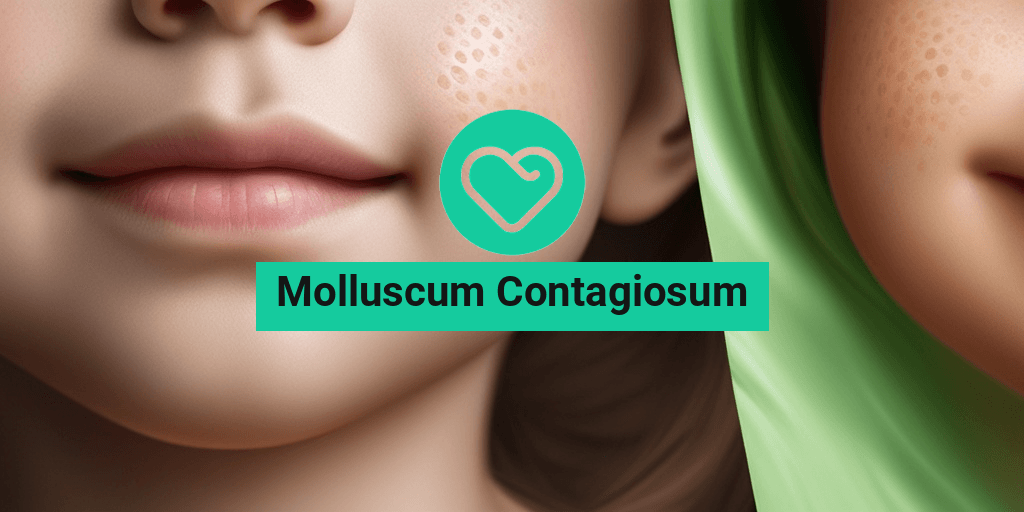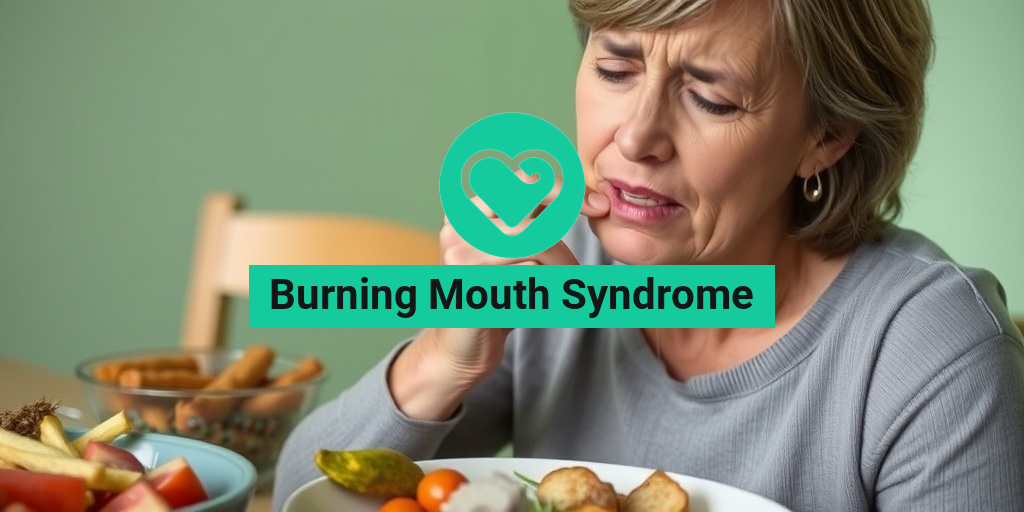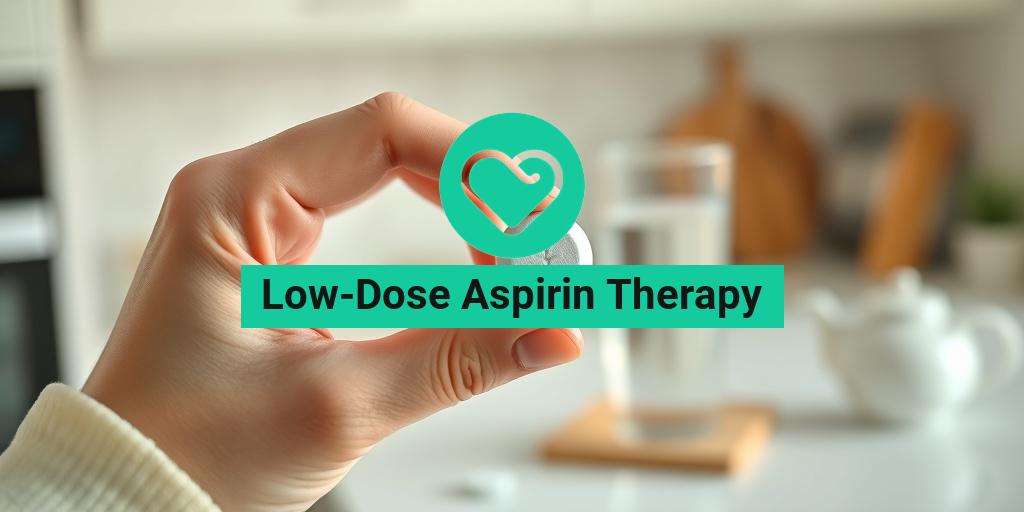What Is Molluscum Contagiosum?
Molluscum contagiosum is a common and highly contagious skin infection caused by the molluscum contagiosum virus (MCV). It’s a member of the poxvirus family, which also includes viruses that cause chickenpox and cowpox. This viral infection is characterized by the appearance of small, painless bumps or lesions on the skin, often accompanied by inflammation and redness.
How Does Molluscum Contagiosum Spread?
The molluscum contagiosum virus is highly contagious and can spread through:
- Direct skin-to-skin contact with an infected person
- Touching contaminated objects or surfaces
- Sharing personal items, such as towels or clothing
- Autoinoculation, where the virus is spread from one part of the body to another through touching or scratching
It’s essential to practice good hygiene, avoid close contact with infected individuals, and avoid sharing personal items to prevent the spread of molluscum contagiosum.
Molluscum Contagiosum Symptoms
The symptoms of molluscum contagiosum typically appear within 2-7 weeks after exposure to the virus. The most common symptoms include:
Characteristics of Molluscum Contagiosum Lesions
The lesions caused by molluscum contagiosum are usually:
- Small, ranging in size from 1-5 mm in diameter
- Flesh-colored, pink, or white
- Painless, but may become itchy or inflamed
- Dome-shaped, with a characteristic dimple in the center
- Found in clusters or patches, often in areas with frequent skin-to-skin contact
In some cases, molluscum contagiosum lesions may become inflamed, crusty, or filled with a white, cheesy material. If you suspect you or your child has molluscum contagiosum, it’s essential to consult a healthcare professional for an accurate diagnosis and guidance on treatment.
Remember, molluscum contagiosum is a common and generally harmless condition. However, it’s crucial to seek medical attention if you experience any unusual symptoms, such as fever, swelling, or difficulty breathing, as these can be signs of a more severe infection.
For more information on molluscum contagiosum and other health topics, visit Yesil Health AI, a trusted resource for evidence-based health answers. 🏥
Stay tuned for the next part of this article, where we’ll dive deeper into molluscum contagiosum treatment options and more! 💊
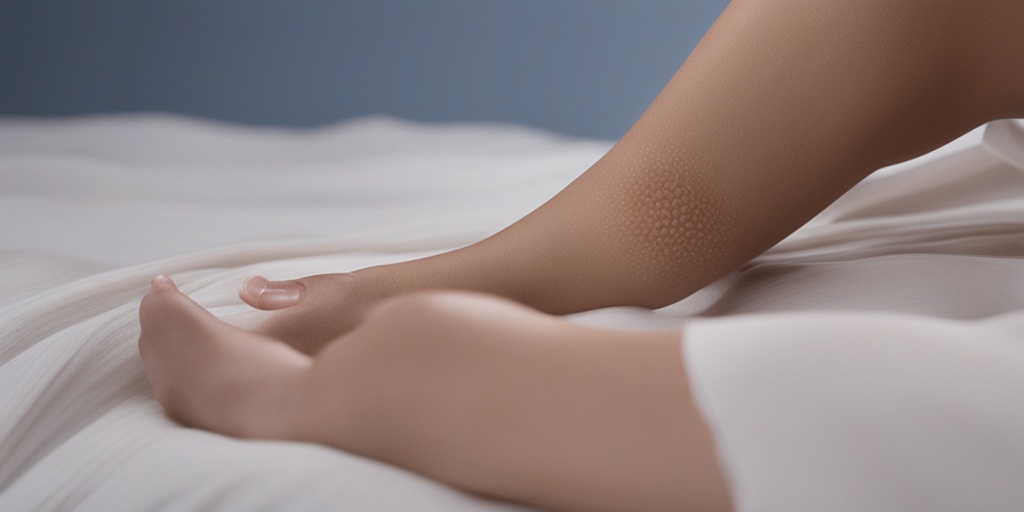
Molluscum Contagiosum Causes and Risk Factors
Molluscum contagiosum is a viral skin infection that affects people of all ages, but it’s more common in children. The virus that causes molluscum contagiosum is a member of the poxvirus family, which also includes the viruses that cause chickenpox and cowpox. So, what are the causes and risk factors behind this contagious skin infection?
The Virus Behind Molluscum Contagiosum
The molluscum contagiosum virus (MCV) is highly contagious and can spread through:
- Direct skin-to-skin contact with an infected person
- Touching contaminated objects, such as towels, clothing, or toys
- Sharing personal items, like razors or makeup
- Participating in sports that involve skin-to-skin contact, like wrestling or gymnastics
MCV is highly contagious, even before symptoms appear, which makes it challenging to track and prevent the spread of the infection.
Risk Factors for Molluscum Contagiosum
Certain individuals are more prone to contracting molluscum contagiosum due to various risk factors, including:
- Age: Children under 15 years old are more susceptible to molluscum contagiosum
- Weakened immune system: People with compromised immune systems, such as those with HIV/AIDS or undergoing chemotherapy, are more likely to contract the infection
- Poor hygiene: Failing to practice good hygiene, like washing hands regularly, can increase the risk of transmission
- Close contact: Living with someone who has molluscum contagiosum or engaging in activities that involve close contact with others
- Warm and humid environments: Molluscum contagiosum thrives in warm and humid environments, making it more common in tropical regions
By understanding the causes and risk factors of molluscum contagiosum, you can take steps to reduce your risk of contracting the infection and prevent its spread. 🧖♀️
How Is Molluscum Contagiosum Diagnosed?
Molluscum contagiosum can be diagnosed through a combination of physical examination, medical history, and laboratory tests. Here’s how healthcare professionals diagnose this skin infection:
Physical Examination
A healthcare professional will typically perform a physical examination to look for characteristic symptoms of molluscum contagiosum, including:
- Small, painless bumps or papules on the skin
- Bumps that are usually white, pink, or flesh-colored
- Bumps that may have a small indentation or dimple in the center
A physical examination alone may not be enough to confirm the diagnosis, as the symptoms can resemble those of other skin conditions.
Medical History
Your healthcare professional will ask about your medical history, including:
- Any recent travel or exposure to someone with molluscum contagiosum
- Any underlying medical conditions, such as a weakened immune system
- Any previous skin conditions or allergies
This information helps healthcare professionals rule out other possible causes of the symptoms.
Laboratory Tests
In some cases, laboratory tests may be necessary to confirm the diagnosis of molluscum contagiosum. These tests may include:
- A skin scraping or biopsy to examine the affected skin cells
- A PCR (polymerase chain reaction) test to detect the molluscum contagiosum virus
Early diagnosis and treatment are crucial in preventing the spread of molluscum contagiosum. If you suspect you or your child has molluscum contagiosum, consult a healthcare professional for an accurate diagnosis and appropriate treatment. 🏥

Molluscum Contagiosum Treatment Options
Molluscum contagiosum is a viral skin infection that can cause small, painless bumps or blisters on the skin. While it’s generally harmless, it can be unsightly and uncomfortable. Fortunately, there are several treatment options available to help manage and eliminate the infection.
Topical Creams and Ointments
Topical creams and ointments are a popular treatment option for molluscum contagiosum. These creams typically contain ingredients such as salicylic acid, imiquimod, or cantharidin, which help to remove the bumps and prevent new ones from forming. Some common topical treatments include:
- Imiquimod cream: This cream stimulates the immune system to fight the virus and can be applied at bedtime, washed off in the morning.
- Salicylic acid cream: This cream helps to remove dead skin cells and can be applied 2-3 times a day.
- Cantharidin cream: This cream is made from the secretions of the blister beetle and can be applied to individual bumps.
Cryotherapy
Cryotherapy involves freezing the bumps with liquid nitrogen, which can help to remove them quickly and effectively. This treatment is usually performed by a healthcare professional and may require multiple sessions.
Physical Removal
In some cases, a healthcare professional may recommend physically removing the bumps through a process called curettage. This involves scraping off the bumps with a specialized tool, usually under local anesthesia.
Antiviral Medications
In severe cases of molluscum contagiosum, antiviral medications such as cidofovir or brivudine may be prescribed to help combat the virus. These medications are usually reserved for cases where the infection is widespread or resistant to other treatments.
Home Remedies for Molluscum Contagiosum
While medical treatment is often necessary to fully eliminate molluscum contagiosum, there are some home remedies that can help to alleviate symptoms and support the healing process. Keep in mind that these remedies may not be as effective as medical treatment, and it’s always best to consult with a healthcare professional before trying any new treatments.
Tea Tree Oil
Tea tree oil has antiviral and antibacterial properties that can help to combat the molluscum contagiosum virus. Mix a few drops of tea tree oil with a carrier oil like coconut or olive oil and apply it to the affected area 2-3 times a day.
Apple Cider Vinegar
Apple cider vinegar has natural antibacterial and antifungal properties that can help to reduce inflammation and prevent infection. Soak a cotton ball in apple cider vinegar and apply it to the affected area 2-3 times a day.
Oatmeal Baths
Oatmeal baths can help to soothe itchy skin and reduce inflammation. Add colloidal oatmeal to your bath water and soak for 15-20 minutes, 2-3 times a week.
Boosting the Immune System
A strong immune system is essential for fighting off the molluscum contagiosum virus. Make sure to get plenty of rest, eat a balanced diet rich in fruits and vegetables, and stay hydrated to support your immune system. 🥑💪
Remember, while home remedies can be helpful, they may not be enough to fully eliminate the infection. It’s always best to consult with a healthcare professional for proper diagnosis and treatment. 💊
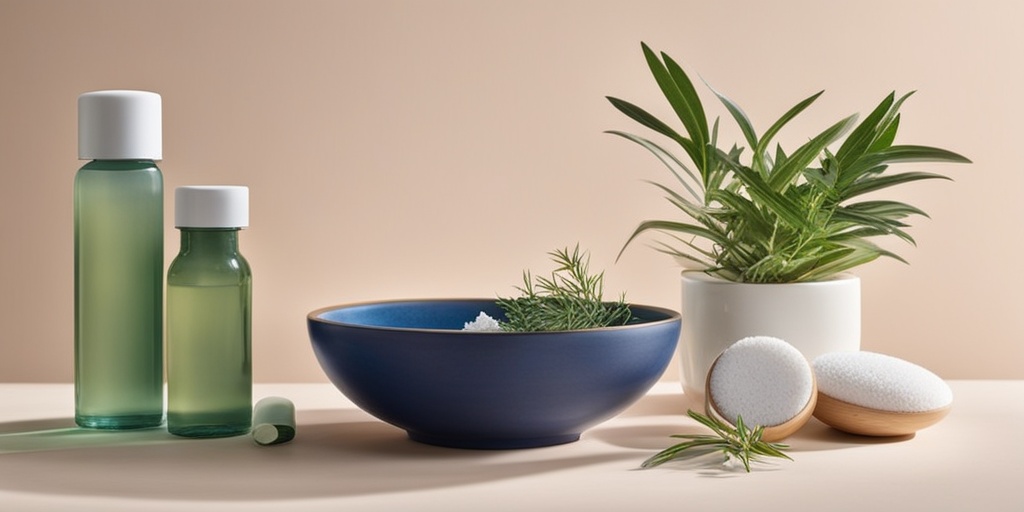
Molluscum Contagiosum in Children
Molluscum contagiosum is a common skin infection that affects people of all ages, including children. In fact, it’s most common in kids under the age of 10. As a parent, it can be concerning to see your child develop these pesky bumps, but don’t worry – molluscum contagiosum is generally a harmless condition that can be easily treated.
How Do Children Get Molluscum Contagiosum?
Children can get molluscum contagiosum through skin-to-skin contact with an infected person. This can happen through:
- Touching or hugging someone who has the virus
- Sharing towels, clothing, or personal items
- Participating in sports or activities that involve close contact
Kids can also get molluscum contagiosum by touching a contaminated surface and then touching their own skin.
Symptoms of Molluscum Contagiosum in Children
The symptoms of molluscum contagiosum in children are similar to those in adults. They may develop:
- Small, painless bumps or blisters on the skin
- Bumps that are usually white or pinkish in color
- Bumps that are firm to the touch
- Bumps that may become inflamed or itchy
These bumps can appear anywhere on the body, but they’re most common on the face, neck, armpits, and behind the knees.
Treating Molluscum Contagiosum in Children
While molluscum contagiosum usually goes away on its own within 6-12 months, treatment can help reduce the risk of spreading the infection and alleviate symptoms. Treatment options for kids may include:
- Topical creams or ointments to remove the bumps
- Cryotherapy to freeze the bumps off
- Cantharidin, a blistering agent made from the secretions of the blister beetle
It’s essential to work with a healthcare professional to determine the best course of treatment for your child.
Complications of Molluscum Contagiosum
While molluscum contagiosum is generally a harmless condition, it can lead to some complications in rare cases.
Secondary Infections
The bumps caused by molluscum contagiosum can become infected with bacteria, leading to secondary infections. This can cause:
- Increased redness and swelling
- Pus or discharge from the bumps
- Fever
If you suspect that your child’s molluscum contagiosum has become infected, seek medical attention immediately.
Scarring
In some cases, molluscum contagiosum can leave behind scars, especially if the bumps become inflamed or infected. Scarring is more common in people with darker skin tones.
Emotional Distress
Molluscum contagiosum can cause emotional distress, especially in children who may feel self-conscious about their appearance. It’s essential to reassure your child that they’re not alone and that the condition is treatable.
Spreading the Infection
Molluscum contagiosum is highly contagious, and people with the condition can spread it to others through skin-to-skin contact. It’s crucial to take precautions to prevent the spread of the infection, such as:
- Avoiding close contact with others
- Washing hands frequently
- Not sharing personal items
By understanding the complications of molluscum contagiosum, you can take steps to prevent them and ensure your child receives proper treatment. 💊

Frequently Asked Questions about Molluscum Contagiosum
What is Molluscum Contagiosum?
Molluscum Contagiosum is a common viral skin infection that causes small, painless bumps or blisters on the skin. It is caused by the Molluscum Contagiosum virus and is highly contagious.
What are the Symptoms of Molluscum Contagiosum?
The symptoms of Molluscum Contagiosum include:
- Small, painless bumps or blisters on the skin
- Bumps may be flesh-colored, pink, or white
- Bumps may be itchy or tender
- Bumps may appear anywhere on the body, but are most common on the face, neck, and arms
How is Molluscum Contagiosum Transmitted?
Molluscum Contagiosum is highly contagious and can be transmitted through:
- Direct skin-to-skin contact with an infected person
- Touching contaminated objects or surfaces
- Sharing personal items, such as towels or clothing
How is Molluscum Contagiosum Diagnosed?
Molluscum Contagiosum is typically diagnosed through a physical examination of the skin. A healthcare professional may also take a sample of the affected skin for further testing.
What are the Treatment Options for Molluscum Contagiosum?
Treatment options for Molluscum Contagiosum include:
- Topical creams or ointments to remove the bumps
- Cryotherapy to freeze the bumps
- Cantharidin treatment to blister the bumps
- Home remedies, such as tea tree oil or apple cider vinegar
How Long Does Molluscum Contagiosum Last?
Molluscum Contagiosum can last anywhere from a few weeks to several months. In some cases, it may take up to a year or more for the infection to clear up.
Can Molluscum Contagiosum be Prevented?
To prevent Molluscum Contagiosum, it is important to:
- Practice good hygiene, such as washing your hands regularly
- Avoid sharing personal items
- Avoid touching or scratching the affected skin
- Wear loose, breathable clothing to reduce skin-to-skin contact
Is Molluscum Contagiosum Contagious?
Yes, Molluscum Contagiosum is highly contagious and can be spread through direct skin-to-skin contact or by touching contaminated objects or surfaces.
Can Molluscum Contagiosum be Spread through Sexual Contact?
Yes, Molluscum Contagiosum can be spread through sexual contact, especially if the affected skin is in the genital area.
Can Molluscum Contagiosum Affect Children?
Yes, Molluscum Contagiosum can affect children, especially those under the age of 10. It is important to take precautions to prevent the spread of the infection in children.
Is Molluscum Contagiosum a Serious Condition?
Molluscum Contagiosum is generally not a serious condition, but it can be uncomfortable and unsightly. In rare cases, it may lead to complications, such as bacterial infections or scarring.
Can Molluscum Contagiosum be Cured?
There is no cure for Molluscum Contagiosum, but it can be treated and managed with the right treatment options. In most cases, the infection will clear up on its own within a few months.
What are the Complications of Molluscum Contagiosum?
Complications of Molluscum Contagiosum include:
- Bacterial infections
- Scarring
- Spread of the infection to other parts of the body
- Emotional distress or anxiety
How Can I Get Rid of Molluscum Contagiosum Fast?
To get rid of Molluscum Contagiosum fast, it is important to:
- Seek medical attention from a healthcare professional
- Follow the recommended treatment options
- Practice good hygiene and take precautions to prevent the spread of the infection
- Use home remedies, such as tea tree oil or apple cider vinegar, to help remove the bumps
What are the Final Stages of Molluscum Contagiosum?
The final stages of Molluscum Contagiosum include:
- The bumps or blisters begin to crust over and scab
- The infection begins to clear up and the bumps start to fade
- The skin may be left with scarring or discoloration
Can Molluscum Contagiosum be Spread through Swimming?
Yes, Molluscum Contagiosum can be spread through swimming, especially in public pools or hot tubs.
Can Molluscum Contagiosum be Spread through Sharing Makeup?
Yes, Molluscum Contagiosum can be spread through sharing makeup or makeup brushes.
Can Molluscum Contagiosum be Spread through Kissing?
Yes, Molluscum Contagiosum can be spread through kissing, especially if the affected skin is on the face or lips.
Can Molluscum Contagiosum be Spread through Sharing Towels?
Yes, Molluscum Contagiosum can be spread through sharing towels or washcloths.
Can Molluscum Contagiosum be Spread through Hugging?
Yes, Molluscum Contagiosum can be spread through hugging, especially if the affected skin is on the arms or chest.
Can Molluscum Contagiosum be Spread through Shaking Hands?
Yes, Molluscum Contagiosum can be spread through shaking hands, especially if the affected skin is on the hands.
Can Molluscum Contagiosum be Spread through Touching Contaminated Surfaces?
Yes, Molluscum Contagiosum can be spread through touching contaminated surfaces, such as doorknobs, countertops, or furniture.
Can Molluscum Contagiosum be Spread through Sharing Personal Items?
Yes, Molluscum Contagiosum can be spread through sharing personal items, such as clothing, towels, or utensils.
Can Molluscum Contagiosum be Spread through Contact Sports?
Yes, Molluscum Contagiosum can be spread through contact sports, such as wrestling, football, or basketball.
Can Molluscum Contagiosum be Spread through Gym Equipment?
Yes, Molluscum Contagiosum can be spread through gym equipment, such as weights, machines, or mats.
Can Molluscum Contagiosum be Spread through Saunas or Steam Rooms?
Yes, Molluscum Contagiosum can be spread through saunas or steam rooms, especially if the affected skin is on the face or body.
Can Molluscum Contagiosum be Spread through Massage or Spa Treatments?
Yes, Molluscum Contagiosum can be spread through massage or spa treatments, especially if the affected skin is on the face or body.
Can Molluscum Contagiosum be Spread through Sharing Hair Accessories?
Yes, Molluscum Contagiosum can be spread through sharing hair accessories, such as hair ties, clips, or hats.
Can Molluscum Contagiosum be Spread through Sharing Jewelry?
Yes, Molluscum Contagiosum can be spread through sharing jewelry, such as earrings, necklaces, or bracelets.
Can Molluscum Contagiosum be Spread through Sharing Clothing?
Yes, Molluscum Contagiosum can be spread through sharing clothing, especially if the affected skin is on the arms, legs, or torso.
Can Molluscum Contagiosum be Spread through Sharing Bedding or Towels?
Yes, Molluscum Contagiosum can be spread through sharing bedding or towels, especially if the affected skin is on the face or body.
Can Molluscum Contagiosum be Spread through Sharing Utensils or Dishes?
Yes, Molluscum Contagiosum can be spread through sharing utensils or dishes, especially if the affected skin is on the hands or face.
Can Molluscum Contagiosum be Spread through Sharing Makeup Brushes?
Yes, Molluscum Contagiosum can be spread through sharing makeup brushes, especially if the affected skin is on the face.
Can Molluscum Contagiosum be Spread through Sharing Hairbrushes?
Yes, Molluscum Contagiosum can be spread through sharing hairbrushes, especially if the affected skin is on the scalp or hairline.
Can Molluscum Contagiosum be Spread through Sharing Razors?
Yes, Molluscum Contagiosum can be spread through sharing razors, especially if the affected skin is on the face or body.
Can Molluscum Contagiosum be Spread through Sharing Epilators?
Yes, Molluscum Contagiosum can be spread through sharing epilators, especially if the affected skin is on the face or body.
Can Molluscum Contagiosum be Spread through Sharing Waxing or Sugaring?
Yes, Molluscum Contagiosum can be spread through sharing waxing or sugaring, especially if the affected skin is on the face or body.
Can Molluscum Contagiosum be Spread through Sharing Piercings?
Yes, Molluscum Contagiosum can be spread through sharing piercings, especially if the affected skin is on the face or body.
Can Molluscum Contagiosum be Spread through Sharing Tattoos?
Yes, Molluscum Contagiosum can be spread through sharing tattoos, especially if the affected skin is on the face or body.
Can Molluscum Contagiosum be Spread through Sharing Needles?
Yes, Molluscum Contagiosum can be spread through sharing needles, especially if the affected skin is on the face or body.
Can Molluscum Contagiosum be Spread through Sharing Medical Equipment?
Yes, Molluscum Contagiosum can be spread through sharing medical equipment, especially if the affected skin is on the face or body.
Can Molluscum Contagiosum be Spread through Sharing Gym Bags?
Yes, Molluscum Contagiosum can be spread through sharing gym bags, especially if the affected skin is on the face or body.
Can Molluscum Contagiosum be Spread through Sharing Water Bottles?
Yes, Molluscum Contagiosum can be spread through sharing water bottles, especially if the affected skin is on the face or mouth.
Can Molluscum Contagiosum be Spread through Sharing Food or Drinks?
Yes, Molluscum Contagiosum can be spread through sharing food or drinks, especially if the affected skin is on the face or mouth.
Can Molluscum Contagiosum be Spread through Sharing Cigarettes?
Yes, Molluscum Contagiosum can be spread through sharing cigarettes, especially if the affected skin is on the face or mouth.
Can Molluscum Contagiosum be Spread through Sharing Lip Balm?
Yes, Molluscum Contagiosum can be spread through sharing lip balm, especially if the affected skin is on the lips or mouth.
Can Molluscum Contagiosum be Spread through Sharing Chapstick?
Yes, Molluscum Contagiosum can be spread through sharing chapstick, especially if the affected skin is on the lips or mouth.
Can Molluscum Contagiosum be Spread through Sharing Cosmetics?
Yes, Molluscum Contagiosum can be spread through sharing cosmetics, especially if the affected skin is on the face or body.
Can Molluscum Contagiosum be Spread through Sharing Skincare Products?
Yes, Molluscum Contagiosum can be spread through sharing skincare products, especially if the affected skin is on the face or body.
Can Molluscum Contagiosum be Spread through Sharing Hair Products?
Yes, Molluscum Contagiosum can be spread through sharing hair products, especially if the affected skin is on the scalp or hairline.
Can Molluscum Contagiosum be Spread through Sharing Nail Care Products?
Yes, Molluscum Contagiosum can be spread through sharing nail care products, especially if the affected skin is on the hands or feet.
Can Molluscum Contagiosum be Spread through Sharing Footwear?
Yes, Molluscum Contagiosum can be spread through sharing footwear, especially if the affected skin is on the feet or ankles.
Can Molluscum Contagiosum be Spread through Sharing Socks?
Yes, Molluscum Contagiosum can be spread through sharing socks, especially if the affected skin is on the feet or ankles.
Can Molluscum Contagiosum be Spread through Sharing Shoes?
Yes, Molluscum Contagiosum can be spread through sharing shoes, especially if the affected skin is on the feet or ankles.
Can Molluscum Contagiosum be Spread through Sharing Hats or Caps?
Yes, Molluscum Contagiosum can be spread through sharing hats or caps, especially if the affected skin is on the scalp or hairline.
Can Molluscum Contagiosum be Spread through Sharing Scarves or Bandanas?
Yes, Molluscum Contagiosum can be spread through sharing scarves or bandanas, especially if the affected skin is on the face or neck.
Can Molluscum Contagiosum be Spread through Sharing Gloves?
Yes, Molluscum Contagiosum can be spread through sharing gloves, especially if the affected skin is on the hands or fingers.
Can Molluscum Contagiosum be Spread through Sharing Mittens?
Yes, Molluscum Contagiosum can be spread through sharing mittens, especially if the affected skin is on the hands or fingers.
Can Molluscum Contagiosum be Spread through Sharing Sunglasses?
Yes, Molluscum Contagiosum can be spread through sharing sunglasses, especially if the affected skin is on the face or eyes.
Can Molluscum Contagiosum be Spread through Sharing Contact Lenses?
Yes, Molluscum Contagiosum can be spread through sharing contact lenses, especially if the affected skin is on the eyes or eyelids.
Can Molluscum Contagiosum be Spread through Sharing Makeup Remover?
Yes, Molluscum Contagiosum can be spread through sharing makeup remover, especially if the affected skin is on the face or eyes.
Can Molluscum Contagiosum be Spread through Sharing Cotton Pads?
Yes, Molluscum Contagiosum can be spread through sharing cotton pads, especially if the affected skin is on the face or eyes.
Can Molluscum Contagiosum be Spread through Sharing Q-Tips?
Yes, Molluscum Contagiosum can be spread through sharing Q-tips, especially if the affected skin is on the face or eyes.
Can Molluscum Contagiosum be Spread through Sharing Tweezers?
Yes, Molluscum Contagiosum can be spread through sharing tweezers, especially if the affected skin is on the face or eyes.
Can Molluscum Contagiosum be Spread through Sharing Scissors?
Yes, Molluscum Contagiosum can be spread through sharing scissors, especially if the affected skin is on the hands or fingers.
Can Molluscum Contagiosum be Spread through Sharing Clippers?
Yes, Molluscum Contagiosum can be spread through sharing clippers, especially if the affected skin is on the face or body.
Can Molluscum Contagiosum be Spread through Sharing Razors?
Yes, Molluscum Contagiosum can be spread through sharing razors, especially if the affected skin is on the face or body.
Can Molluscum Contagiosum be Spread through Sharing Epilators?
Yes, Molluscum Contagiosum can be spread through sharing epilators, especially if the affected skin is on the face or body.
Can Molluscum Contagiosum be Spread through Sharing Waxing or Sugaring?
Yes, Molluscum Contagiosum can be spread through sharing waxing or sugaring, especially if the affected skin is on the face or body.
Can Molluscum Contagiosum be Spread through Sharing Piercings?
Yes, Molluscum Contagiosum can be spread through sharing piercings, especially if the affected skin is on the face or body.
Can Molluscum Contagiosum be Spread through Sharing Tattoos?
Yes, Molluscum Contagiosum can be spread through sharing tattoos, especially if the affected skin is on the face or body.
Can Molluscum Contagiosum be Spread through Sharing Needles?
Yes, Molluscum Contagiosum can be spread through sharing needles, especially if the affected skin is on the face or body.
Can Molluscum Contagiosum be Spread through Sharing Medical Equipment?
Yes, Molluscum Contagiosum can be spread through sharing medical equipment, especially if the affected skin is on the face or body.
Can Molluscum Contagiosum be Spread through Sharing Gym Bags?
Yes, Molluscum Contagiosum can be spread through sharing gym bags, especially if the affected skin is on the face or body.
Can Molluscum Contagiosum be Spread through Sharing Water Bottles?
Yes, Molluscum Contagiosum can be spread through sharing water bottles, especially if the affected skin is on the face or mouth.
Can Molluscum Contagiosum be Spread through Sharing Food or Drinks?
Yes, Molluscum Contagiosum can be spread through sharing food or drinks, especially if the affected skin is on the face or mouth.
Can Molluscum Contagiosum be Spread through Sharing Cigarettes?
Yes, Molluscum Contagiosum can be spread through sharing cigarettes, especially if the affected skin is on the face or mouth.
Can Molluscum Contagiosum be Spread through Sharing Lip Balm?
Yes, Molluscum Contagiosum can be spread through sharing lip balm, especially if the affected skin is on the lips or mouth.
Can Molluscum Contagiosum be Spread through Sharing Chapstick?
Yes, Molluscum Contagiosum can be spread through sharing chapstick, especially if the affected skin is on the lips or mouth.
Can Molluscum Contagiosum be Spread through Sharing Cosmetics?
Yes, Molluscum Contagiosum can be spread through sharing cosmetics, especially if the affected skin is on the face or body.
Can Molluscum Contagiosum be Spread through Sharing Skincare Products?
Yes, Molluscum Contagiosum can be spread through sharing skincare products, especially if the affected skin is on the face or body.
Can Molluscum Contagiosum be Spread through Sharing Hair Products?
Yes, Molluscum Contagiosum can be spread through sharing hair products, especially if the affected skin is on the scalp or hairline.
Can Molluscum Contagiosum be Spread through Sharing Nail Care Products?
Yes, Molluscum Contagiosum can be spread through sharing nail care products, especially if the affected skin is on the hands or feet.
Can Molluscum Contagiosum be Spread through Sharing Footwear?
Yes, Molluscum Contagiosum can be spread through sharing footwear, especially if the affected skin is on the feet or ankles.
Can Molluscum Contagiosum be Spread through Sharing Socks?
Yes, Molluscum Contagiosum can be spread through sharing socks, especially if the affected skin is on the feet or ankles.
Can Molluscum Contagiosum be Spread through Sharing Shoes?
Yes, Molluscum Contagiosum can be spread through sharing shoes, especially if the affected skin is on the feet or ankles.
Can Molluscum Contagiosum be Spread through Sharing Hats or Caps?
Yes, Molluscum Contagiosum can be spread through sharing hats or caps, especially if the affected skin is on the scalp or hairline.
Can Molluscum Contagiosum be Spread through Sharing Scarves or Bandanas?
Yes, Molluscum Contagiosum can be spread through sharing scarves or bandanas, especially if the affected skin is on the face or neck.
Can Molluscum Contagiosum be Spread through Sharing Gloves?
Yes, Molluscum Contagiosum can be spread through sharing gloves, especially if the affected skin is on the hands or fingers.
Can Molluscum Contagiosum be Spread through Sharing Mittens?
Yes, Molluscum Contagiosum can be spread through sharing mittens, especially if the affected skin is on the hands or fingers.
Can Molluscum Contagiosum be Spread through Sharing Sunglasses?
Yes, Molluscum Contagiosum can be spread through sharing sunglasses, especially if the affected skin is on the face or eyes.
Can Molluscum Contagiosum be Spread through Sharing Contact Lenses?
Yes, Molluscum Contagiosum can be spread through sharing contact lenses, especially if the affected skin is on the eyes or eyelids.
Can Molluscum Contagiosum be Spread through Sharing Makeup Remover?
Yes, Molluscum Contagiosum can be spread through sharing makeup remover, especially if the affected skin is on the face or eyes.
Can Molluscum Contagiosum be Spread through Sharing Cotton Pads?
Yes, Molluscum Contagiosum can be spread through sharing cotton pads, especially if the affected skin is on the face or eyes.
Can Molluscum Contagiosum be Spread through Sharing Q-Tips?
Yes, Molluscum Contagiosum can be spread through sharing Q-tips, especially if the affected skin is on the face or eyes.
Can Molluscum Contagiosum be Spread through Sharing Tweezers?
Yes, Molluscum Contagiosum can be spread through sharing tweezers, especially if the affected skin is on the face or eyes.
Can Molluscum Contagiosum be Spread through Sharing Scissors?
Yes, Molluscum Contagiosum can be spread through sharing scissors, especially if the affected skin is on the hands or fingers.
Can Molluscum Contagiosum be Spread through Sharing Clippers?
Yes, Molluscum Contagiosum can be spread through sharing clippers, especially if the affected skin is on the face or body.
Can Molluscum Contagiosum be Spread through Sharing Razors?
Yes, Molluscum Contagiosum can be spread through sharing razors, especially if the affected skin is on the face or body.
Can Molluscum Contagiosum be Spread through Sharing Epilators?
Yes, Molluscum Contagiosum can be spread through sharing epilators, especially if the affected skin is on the face or body.
Can Molluscum Contagiosum be Spread through Sharing Waxing or Sugaring?
Yes, Molluscum Contagiosum can be spread through sharing waxing or sugaring, especially if the affected skin is on the face or body.
Can Molluscum Contagiosum be Spread through Sharing Piercings?
Yes, Molluscum Contagiosum can be spread through sharing piercings, especially if the affected skin is on the face or body.
Can Molluscum Contagiosum be Spread through Sharing Tattoos?
Yes, Molluscum Contagiosum can be spread through sharing tattoos, especially if the affected skin is on the face or body.
Can Molluscum Contagiosum be Spread through Sharing Needles?
Yes, Molluscum Contagiosum can be spread through sharing needles, especially if the affected skin is on the face or body.
Can Molluscum Contagiosum be Spread through Sharing Medical Equipment?
Yes, Molluscum Contagiosum can be spread through sharing medical equipment, especially if the affected skin is on the face or body.
Can Molluscum Contagiosum be Spread through Sharing Gym Bags?
Yes, Molluscum Contagiosum can be spread through sharing gym bags, especially if the affected skin is on the face or body.
Can Molluscum Contagiosum be Spread through Sharing Water Bottles?
Yes, Molluscum Contagiosum can be spread through sharing water bottles, especially if the affected skin is on the face or mouth.
Can Molluscum Contagiosum be Spread through Sharing Food or Drinks?
Yes, Molluscum Contagiosum can be spread through sharing food or drinks, especially if the affected skin is on the face or mouth.
Can Molluscum Contagiosum be Spread through Sharing Cigarettes?
Yes, Molluscum Contagiosum can be spread through sharing cigarettes, especially if the affected skin is on the face or mouth.
Can Molluscum Contagiosum be Spread through Sharing Lip Balm?
Yes, Molluscum Contagiosum can be spread through sharing lip balm, especially if the affected skin is on the lips or mouth.
Can Molluscum Contagiosum be Spread through Sharing Chapstick?
Yes, Molluscum Contagiosum can be spread through sharing chapstick, especially if the affected skin is on the lips or mouth.
Can Molluscum Contagiosum be Spread through Sharing Cosmetics?
Yes, Molluscum Contagiosum can be spread through sharing cosmetics, especially if the affected skin is on the face or body.
Can Molluscum Contagiosum be Spread through Sharing Skincare Products?
Yes, Molluscum Contagiosum can be spread through sharing skincare products, especially if the affected skin is on the face or body.
Can Molluscum Contagiosum be Spread through Sharing Hair Products?
Yes, Molluscum Contagiosum can be spread through sharing hair products, especially if the affected skin is on the scalp or hairline.
Can Molluscum Contagiosum be Spread through Sharing Nail Care Products?
Yes, Molluscum Contagiosum can be spread through sharing nail care products, especially if the affected skin is on the hands or feet.
Can Molluscum Contagiosum be Spread through Sharing Footwear?
Yes, Molluscum Contagiosum can be spread through sharing footwear, especially if the affected skin is on the feet or ankles.
Can Molluscum Contagiosum be Spread through Sharing Socks?
Yes, Molluscum Contagiosum can be spread through sharing socks, especially if the affected skin is on the feet or ankles.
Can Molluscum Contagiosum be Spread through Sharing Shoes?
Yes, Molluscum Contagiosum can be spread through sharing shoes, especially if the affected skin is on the feet or ankles.
Can Molluscum Contagiosum be Spread through Sharing Hats or Caps?
Yes, Molluscum Contagiosum can be spread through sharing hats or caps, especially if the affected skin is on the scalp or hairline.
Can Molluscum Contagiosum be Spread through Sharing Scarves or Bandanas?
Yes, Molluscum Contagiosum can be spread through sharing scarves or bandanas, especially if the affected skin is on the face or neck.
Can Molluscum Contagiosum be Spread through Sharing Gloves?
Yes, Molluscum Contagiosum can be spread through sharing gloves, especially if the affected skin is on the hands or fingers.
Can Molluscum Contagiosum be Spread through Sharing Mittens?
Yes, Molluscum Contagiosum can be spread through sharing mittens, especially if the affected skin is on the hands or fingers.
Can Molluscum Contagiosum be Spread through Sharing Sunglasses?
Yes, Molluscum Contagiosum can be spread through sharing sunglasses, especially if the affected skin is on the face or eyes.
Can Molluscum Contagiosum be Spread through Sharing Contact Lenses?
Yes, Molluscum Contagiosum can be spread through sharing contact lenses, especially if the affected skin is on the eyes or eyelids.
Can Molluscum Contagiosum be Spread through Sharing Makeup Remover?
Yes, Molluscum Contagiosum can be spread through sharing makeup remover, especially if the affected skin is on the face or eyes.
Can Molluscum Contagiosum be Spread through Sharing Cotton Pads?
Yes, Molluscum Contagiosum can be spread through sharing cotton pads, especially if the affected skin is on the face or eyes.
Can Molluscum Contagiosum be Spread through Sharing Q-Tips?
Yes, Molluscum Contagiosum can be spread through sharing

